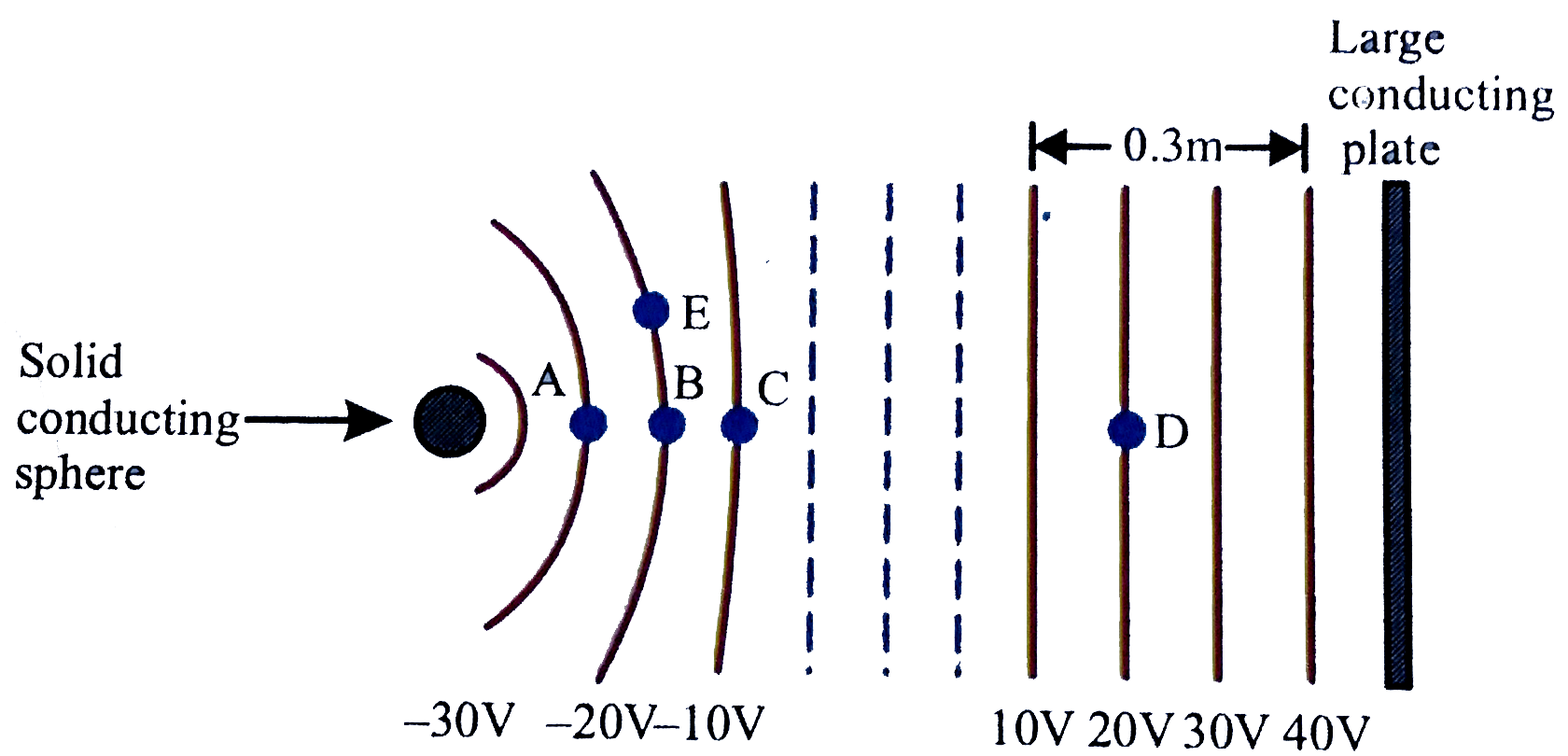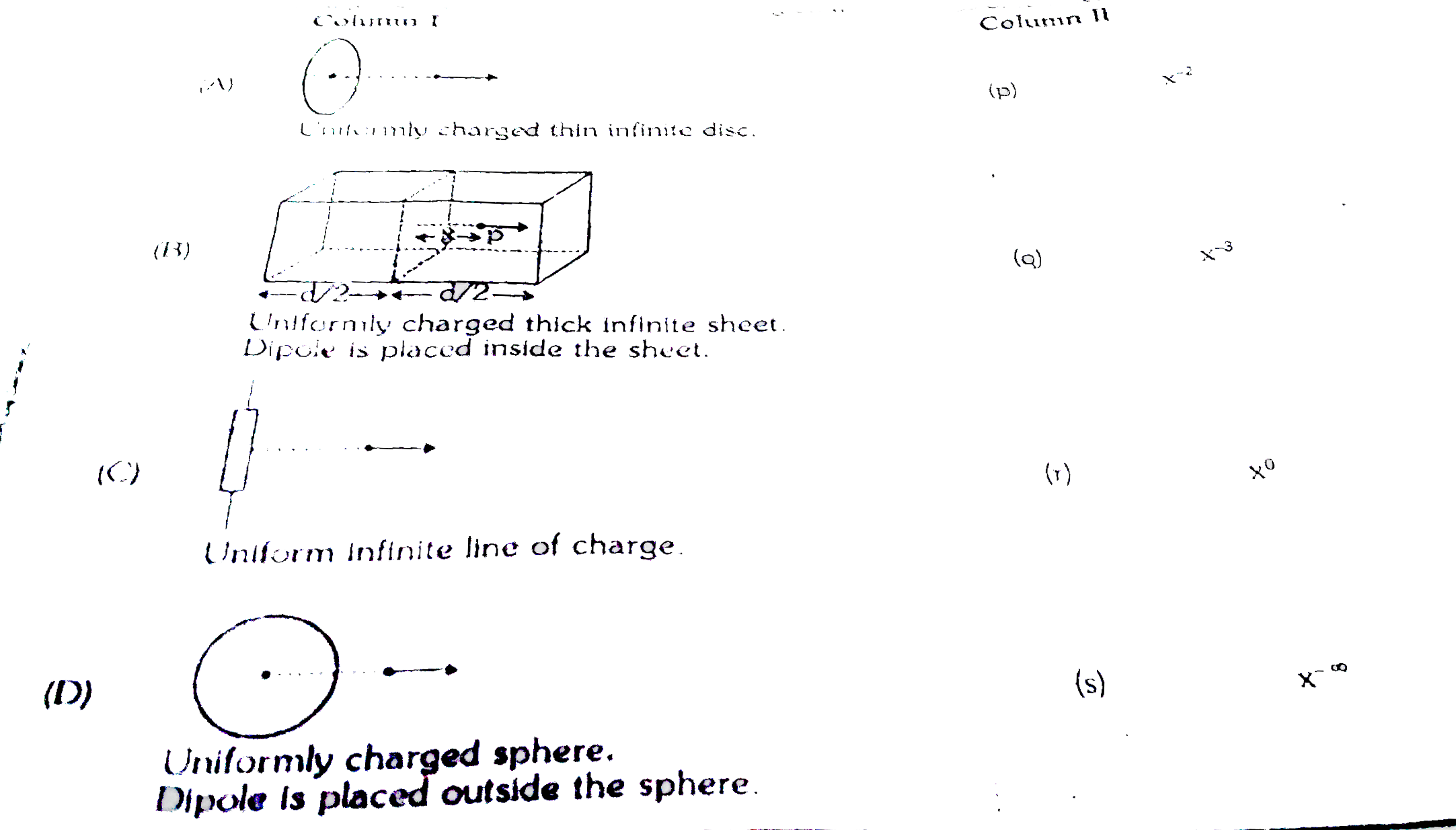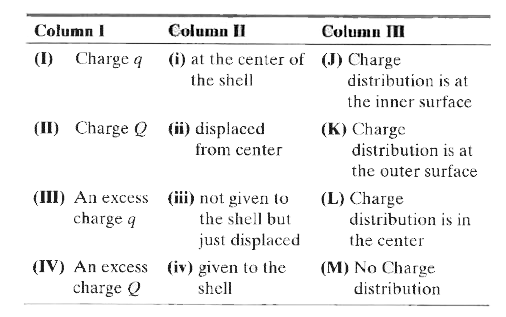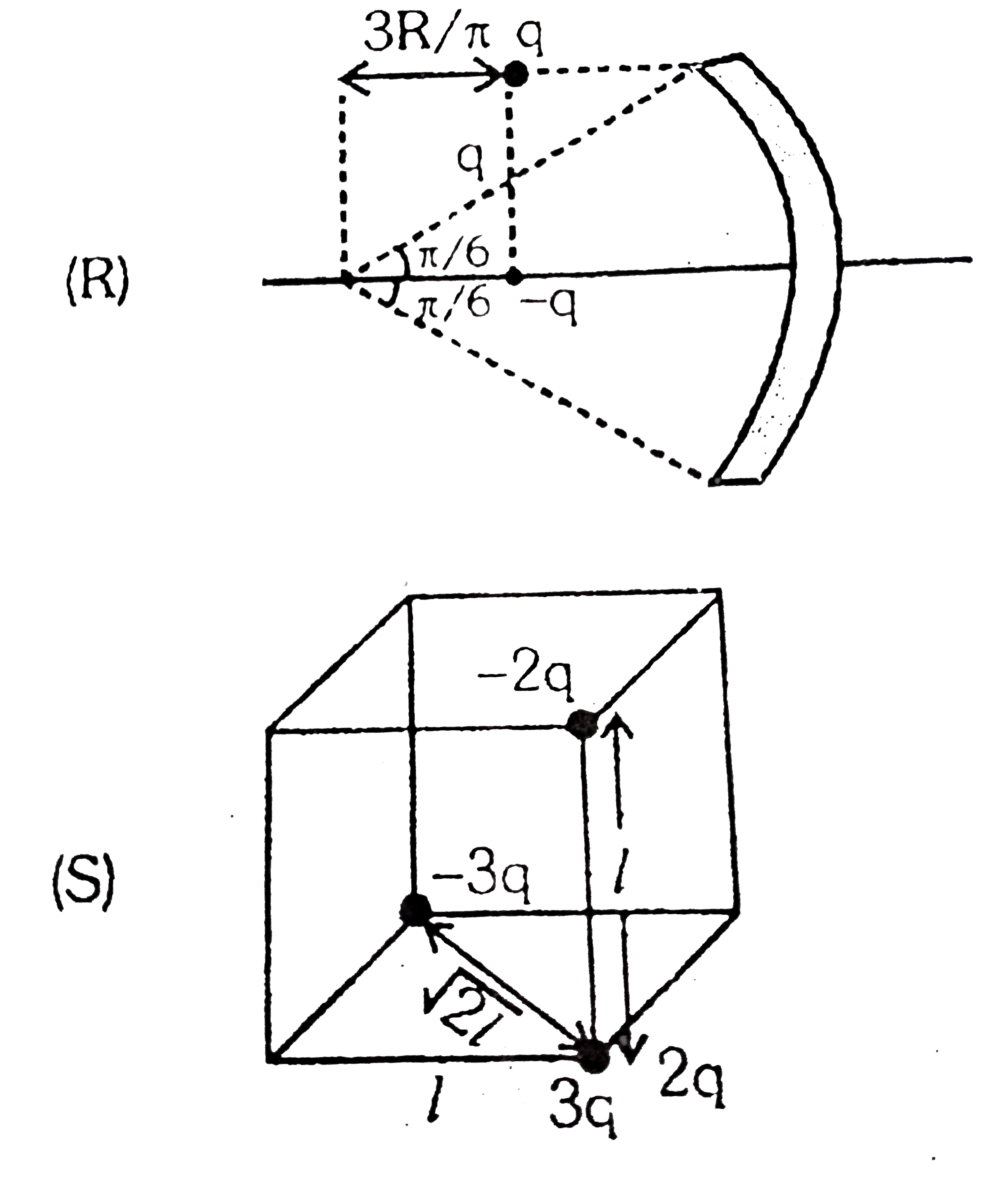Column-I shows different charge distributions. Cloumn-II gives corresponding electric dipole moments.
 Solution in Gujrati
Solution in Gujrati
The correct Answer is:(A) s (B) q (C) r (D) p
Topper's Solved these Questions
- MISCELLANEOUSBOOK - ALLEN CHAPTER - MISCELLANEOUSEXERCISE - Comprehension 5
5 Videos
- MISCELLANEOUSBOOK - ALLEN CHAPTER - MISCELLANEOUSEXERCISE - Comprehension 6
3 Videos
- MISCELLANEOUSBOOK - ALLEN CHAPTER - MISCELLANEOUSEXERCISE - Exersice-06
1 Videos
- KINEMATICS (MOTION ALONG A STRAIGHT LINE AND MOTION IN A PLANE)BOOK - ALLEN CHAPTER - KINEMATICS (MOTION ALONG A STRAIGHT LINE AND MOTION IN A PLANE)EXERCISE - BEGINNER S BOX-7
8 Videos
- PHYSICAL WORLD, UNITS AND DIMENSIONS & ERRORS IN MEASUREMENT BOOK - ALLEN CHAPTER - PHYSICAL WORLD, UNITS AND DIMENSIONS & ERRORS IN MEASUREMENT EXERCISE - EXERCISE-IV
7 Videos
Similar Questions
An accelration produces a narrow beam of protons, each having an initial speed of v0. The beam is directed towards an initially uncharges distant metal sphere of radius R and centered at point O. The initial path of the beam is parallel to the axis of the sphere at a distance of (R/2) from the axis, as indicated in the diagram.

The protons in the beam that collide with the sphere will cause it to becomes charged. The subsequentpotential field at the accelerator due to the sphere can be neglected. The angular momentum of a particle is defined in a similar way to the moment of a force. It is defined as the moment of its linear momentum, linear replacing the force. We may assume the angular momentum of a proton about point O to be conserved. Assume the mass of the proton as mP and the charge on it as e. Given that the potential of the sphere increases with time and eventually reaches a constant velue.
The total energy (E) of a proton in the beam travelling with seed v at a distance of r(r≥R) from point O. Assuming that the sphere has acquired an electrostatic charge Q is
View SolutionThe sketch below show cross section so equipotential surfaces between two charged.Conductors that are shown in solid black.Some points on the equipotenital surfaces .near the conductors are marked as A,B,C….. The arrangements lies in air (Take ε0=8.85×10−12C2/Nm2]

Surfaces charge density of the plate is equal to
View SolutionColumn I shows different charge distributions and short electric dipole at a distance x from the charge distributions. Column II gives the dependence of force acting on the dipole as of function of x.

View SolutionA football player kicks a ball at an angle of 30∘ with an initial speed of 20 m/s. Assuming that the ball travels in a vertical plane, calculate (a) the time at which the ball reaches the highest point (b) the maximum height reached (c) the horizontal range of the ball (d) the time for which the ball is in the air, (g=10m/s2)
View SolutionAssertion : Gravitational forces do not depend on the medium between the masses.
Reason : Mediating particle responsible for gravitational force is graviton.
View SolutionColumn I shows different charge distributions and short electric dipole at a distance x from the charge distributions. Column II gives the dependence of force acting on the dipole as of function of x.

View SolutionColumn-I shows different charge distributions. Cloumn-II gives corresponding electric dipole moments.

View SolutionColumn I gives a situation in which two dipoles of dipole moment pˆi and √3pˆj are placed at origin. A circle of radius R with centre at origin is drawn as shown in figure. Column II gives coordinates of certain positions on the circle. Match the statements in Column I with the statements in Column II.

View Solution5 कूलॉम आवेश के दो बराबर तथा विपरीत आवेशों के बीच की 5.0 सेमी दूरी है। इसका वैद्युत द्विध्रुव -आघूर्ण है:
View SolutionColumn I shows distributionof electric field liness and column II shows charge distribution . Match the columns. {:(,"Column I ",,"Column II"),((A),"Straight lines but not parallel",(p),"Uniformly distributed charged shell"),((B), "Straight lines but parallel ",(q),"Uniformly distributed charged long rod"),((C ),"Curved lines",(r ),"Uniformly distributed infinite charged sheet"),((D), "Some regions where no lines are present",(s),"Electric dipole"),(,,(t),"Any conducting material"):}
View SolutionStatement I : Electric dipole moment is a vector quantity.
Statement II : The direction of electric dipole moment is from negative charge to the positive charge.
View SolutionAn electric dipole is placed in an electric field. Column I is the description of electric field and the angle between the dipole moment →p and the electric field intensity →E and Column II gives the effect of the field on the dipole. Then,

View SolutionConsider the figure given below

A charge Q is placed inside the Spherical conductor shell. In the given table, column 1 shows different charges, column 2 shows the positions of the electric charge and column 3 shows the different types of charge distribution.

In which case will the charge distribution be non-uniform ?
View SolutionConsider the figure given below

A charge Q is placed inside the Spherical conductor shell. In the given table, column 1 shows different charges, column 2 shows the positions of the electric charge and column 3 shows the different types of charge distribution.

In which case will the Charge distribution be uniform ?
View SolutionConsider the figure given below A charge Q is placed inside the Spherical conductor shell. In the given table, column 1 shows different charges, column 2 shows the positions of the electric charge and column 3 shows the different types of charge distribution. What heppens when the charge is near the conductor shell ?
View Solution


